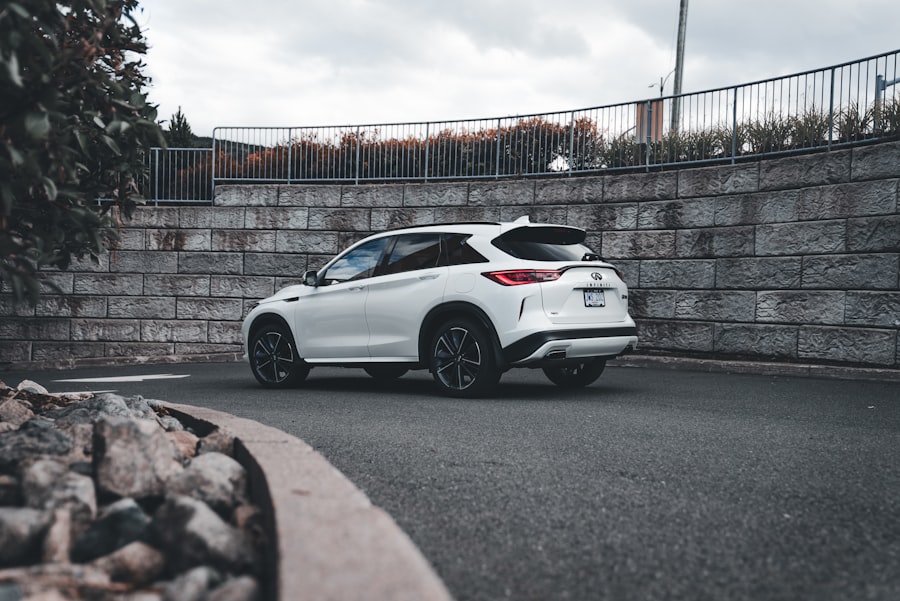The automotive market is a dynamic landscape, constantly evolving with new models, technologies, and consumer preferences. For many, purchasing a new car represents a significant financial commitment, often accompanied by excitement and anxiety. New car deals are designed to attract buyers, offering various incentives such as cash rebates, low-interest financing, and special lease offers.
Understanding the intricacies of these deals can empower consumers to make informed decisions, ensuring they get the best value for their investment. In recent years, the competition among manufacturers has intensified, leading to a plethora of options for buyers. From compact sedans to rugged SUVs, the choices are vast, and so are the deals available.
However, navigating this landscape requires more than just a desire to buy; it necessitates knowledge of market trends, seasonal promotions, and the timing of purchases. By delving into the world of new car deals, prospective buyers can uncover opportunities that align with their needs and budgets.
Key Takeaways
- Research and compare prices to find the best new car deals.
- Use effective negotiation strategies to lower the purchase price.
- Explore various financing options to suit your budget.
- Consider the benefits of buying new, such as warranties and latest features.
- Inspect and test drive thoroughly before finalizing the purchase at the dealership.
How to Find the Best Deals on New Cars
Finding the best deals on new cars involves a combination of research, timing, and strategic planning. One effective approach is to utilize online resources that aggregate information about current promotions from various dealerships. Websites like Edmunds, Cars.com, and TrueCar provide comprehensive listings of available incentives, allowing buyers to compare offers across different makes and models.
These platforms often include user reviews and expert ratings, which can further inform purchasing decisions. Timing is another critical factor in securing a great deal. The automotive industry typically experiences fluctuations in demand based on the time of year.
For instance, dealerships often offer substantial discounts at the end of the month or quarter as they strive to meet sales targets. Additionally, shopping during holiday weekends or at the end of the model year can yield significant savings as dealerships look to clear out inventory to make room for new arrivals. By being aware of these patterns and planning purchases accordingly, buyers can maximize their chances of finding an exceptional deal.
Negotiating Tips for New Car Purchases

Negotiation is an essential skill when it comes to purchasing a new car. Many buyers enter the dealership with preconceived notions about pricing and financing, but being prepared to negotiate can lead to better outcomes. One effective strategy is to conduct thorough research on the vehicle’s market value before stepping foot in the dealership.
Websites like Kelley Blue Book provide insights into fair pricing based on factors such as make, model, year, and condition. Armed with this information, buyers can confidently present their case during negotiations. Another crucial aspect of negotiation is understanding the dealership’s perspective.
Salespeople often work on commission and may have specific targets they need to meet. By establishing rapport and demonstrating a willingness to engage in a collaborative discussion rather than an adversarial confrontation, buyers can create a more favorable negotiating environment. Additionally, being flexible with options such as trade-ins or financing terms can provide leverage in negotiations, allowing buyers to secure a better overall deal.
Financing Options for New Car Buyers
| Financing Option | Typical Interest Rate | Loan Term | Down Payment Requirement | Pros | Cons |
|---|---|---|---|---|---|
| Dealer Financing | 3% – 7% | 36 – 72 months | 10% – 20% | Convenient, promotional rates available | May have higher rates without promotions |
| Bank Loan | 4% – 8% | 24 – 60 months | 10% – 20% | Competitive rates, flexible terms | Requires good credit score |
| Credit Union Loan | 2.5% – 6% | 24 – 72 months | 5% – 15% | Lower interest rates, member benefits | Membership required |
| Leasing | Varies (often lower than loans) | 24 – 36 months | First month + fees | Lower monthly payments, new car every few years | No ownership, mileage limits |
| Personal Loan | 6% – 12% | 12 – 60 months | None | No collateral needed, quick approval | Higher interest rates |
Financing is a pivotal component of the car-buying process, influencing both monthly payments and overall affordability. Buyers have several options when it comes to financing a new vehicle. Traditional bank loans are one avenue; however, many dealerships also offer financing through their own lending institutions.
This can sometimes result in competitive interest rates or promotional offers that may not be available through banks. Leasing is another popular option for those who prefer lower monthly payments and the ability to drive a new car every few years. Lease agreements typically require lower upfront costs and offer the flexibility of returning the vehicle at the end of the term without worrying about depreciation.
However, it’s essential for buyers to understand the terms of leasing agreements, including mileage limits and potential fees for excessive wear and tear. Evaluating personal financial situations and preferences will help determine which financing option aligns best with individual needs.
Benefits of Buying a New Car
Purchasing a new car comes with numerous advantages that can enhance the ownership experience. One of the most significant benefits is reliability; new cars typically come with comprehensive warranties that cover repairs for several years or thousands of miles. This peace of mind allows owners to enjoy their vehicles without the constant worry of unexpected repair costs that often accompany used cars.
Additionally, new cars are equipped with the latest technology and safety features that enhance both driving experience and passenger protection. Features such as advanced driver-assistance systems (ADAS), infotainment systems with smartphone integration, and improved fuel efficiency are just a few examples of what modern vehicles offer. These innovations not only contribute to a more enjoyable driving experience but also promote safety on the road, making new cars an attractive option for many buyers.
Top New Car Models with Great Deals

As consumers explore their options for new car purchases, certain models consistently stand out due to their combination of value and performance. For instance, the Honda Civic has long been celebrated for its reliability, fuel efficiency, and resale value. With various trims available, buyers can find models that fit their budget while enjoying features like advanced safety technology and spacious interiors.
Another noteworthy contender is the Toyota RAV4, which has gained popularity in the compact SUV segment. Known for its versatility and practicality, the RAV4 offers ample cargo space and a comfortable ride. Additionally, Toyota frequently provides attractive financing options or cash rebates that make this model even more appealing to potential buyers.
Other models worth considering include the Hyundai Sonata for its stylish design and generous warranty coverage, as well as the Ford F-150 for those seeking a robust pickup truck with numerous configurations.
Tips for Test Driving and Inspecting New Cars
Test driving is an essential step in the car-buying process that allows potential buyers to assess how well a vehicle meets their needs. When test driving a new car, it’s important to take note of various factors such as comfort, visibility, handling, and noise levels. Prospective buyers should aim to drive in different conditions—such as highway speeds and city traffic—to get a comprehensive feel for how the vehicle performs in real-world scenarios.
In addition to test driving, inspecting the vehicle is crucial before finalizing any purchase. Buyers should examine both the exterior and interior for any signs of damage or defects. Checking features such as lights, wipers, and electronics ensures that everything functions correctly before taking ownership.
Furthermore, reviewing documentation related to warranties and service plans can provide additional assurance regarding long-term maintenance needs.
Finalizing the Purchase: What to Expect at the Dealership
Once a buyer has selected their desired vehicle and negotiated terms, finalizing the purchase involves several steps at the dealership. Initially, buyers will review and sign various documents related to financing agreements and warranties. It’s essential to read through these documents carefully to ensure all terms align with what was discussed during negotiations.
After completing paperwork, buyers will typically receive an overview of their new vehicle’s features from a sales representative or delivery specialist. This orientation can be invaluable in helping owners understand how to operate various systems within the car effectively. Finally, once all formalities are complete, buyers will receive keys to their new vehicle—a moment often filled with excitement as they prepare to drive off into their next adventure.




